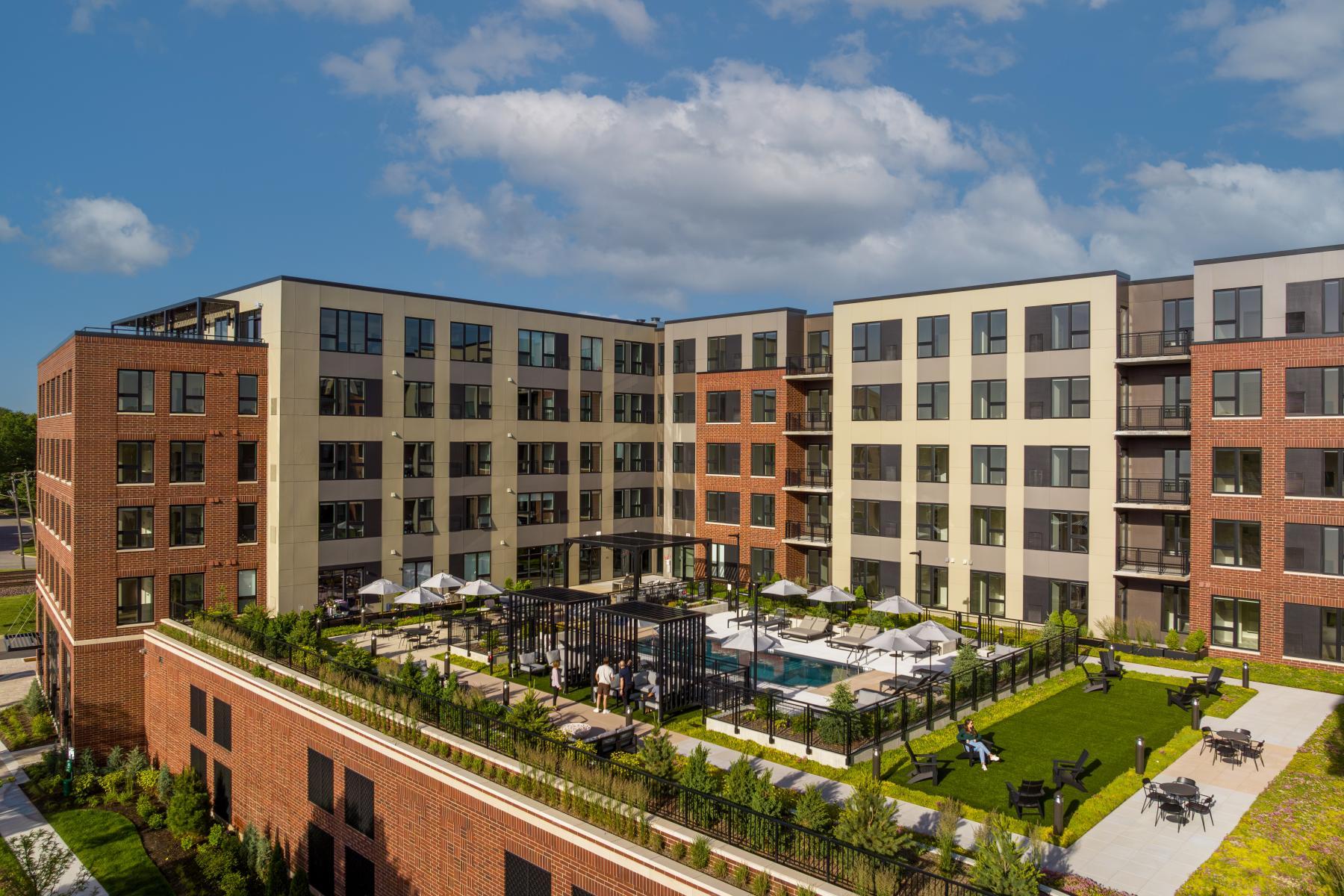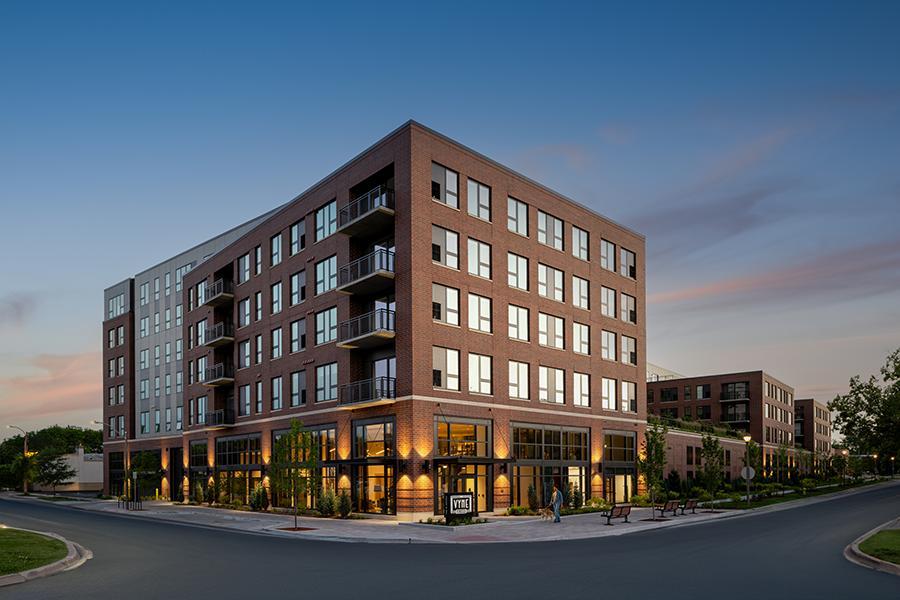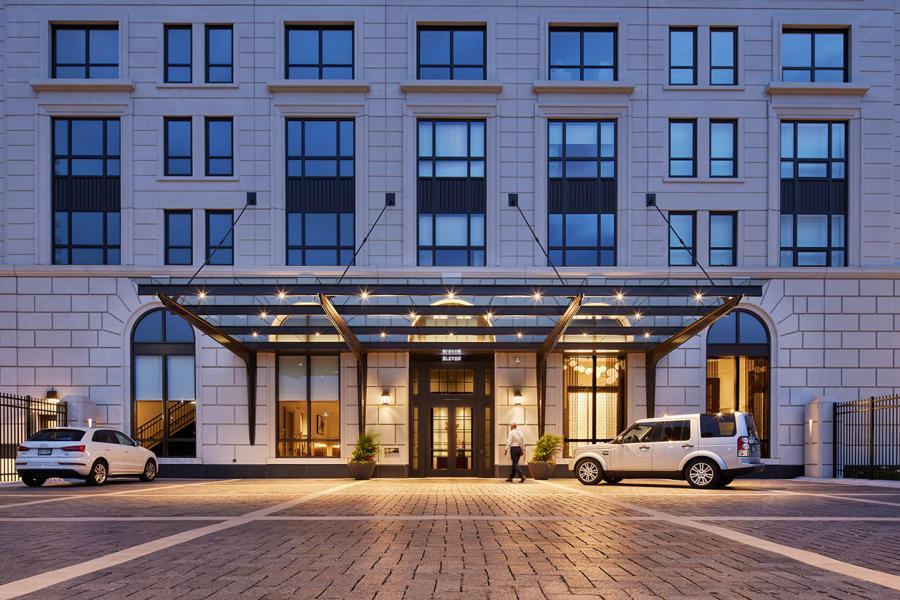Keeping It Quiet: Why Developers Should Prioritize Acoustic Privacy

In rental apartments, families are now more likely to raise children, have pets, host milestone celebrations, etc.—all important components of life that are enjoyable…but aren’t exactly quiet.
Similarly, more people are working from home or within a hybrid setting—which means more neighbors are home during the day. Acoustic privacy becomes even more important as people spend more time and longer durations in multifamily residences.
As designers and developers, if we don’t build our residences so people can maintain acoustic privacy, people will move—which is why it’s important to prioritize sound during the design phase for multifamily developments.
We sat down with Whit Noxon, Associate Director of Architecture to discuss why developers should require high-quality sound acoustics in multifamily developments.
Read on to Whit’s top three reasons that developers need to prioritize acoustic privacy:
- Renter longevity. Privacy and acoustic solutions contribute to overall resident wellness. To put it bluntly, you will see more turnover if renters experience noise—not to mention the frustrations that accompany noise complaints. If renters experience noise, they will move after their lease ends, or even cut their leases short, negatively impacting overall proformas.
Market differentiation and long-term value. We are seeing that more and more owners, operators and prospective residents are placing a higher importance on overall wellness in a community. Certifications, such as Fitwel, can help communities achieve this goal.
The Fitwel certification awards points to buildings for having wellness systems in place, such as high-quality sound acoustics. This leads to market differentiation, giving your prospective residents tangible evidence that high-quality, thoughtful design (including sound acoustics) is accounted for within the building’s architecture. In prioritizing wellness, you are also prioritizing quality operations staff. A positive workplace with several wellness benefits is crucial to retaining top talent and differentiating the operator and community from competitors.
- Tolerance for increased constructability. The building code requires a certain STC (Sound Transmission Class) for walls. When you value engineer your demising wall assembly down to the minimum STC value, you risk your construction project failing the level of sound testing that more operators require. Small things—like a conduit line touching an outlet box—can allow sound transfer from one unit to the next. Because you decided to meet the minimum requirements, you now are faced with major headaches due to sound at the critical point of turning over a completed building to operators and new residents.
Along with the importance of the “why” of high-quality sound acoustics, it’s also key to note the when and how to make acoustics decisions in your building and units.
The answer is clear: schematic design.
During schematic design (the first phase of the architectural process), you might be tempted to trim a five-figure sum off your project’s estimated cost by swapping a unit demising wall containing a double stud wall with an air gap in between for a single stud wall with offset studs. But you might not even realize that you are likely accepting a higher renter turnover rate with that decision.
The money spent on fixing these problems after the building is complete (and resident complaints pour in) can be astronomical, and it can likely deter prospective residents if sections of your building are closed off due to renovations/maintenance. Instead, a more proactive, sound-protective approach establishes acoustic privacy (and often overlaps with other sustainability features related to insulation). Examples include:
- Unit partitions with air gaps minimize noise transfer from the side.
- Insulated floor/ceiling assemblies with Acousti-Mat and Gyp-Crete toppings minimize noise from above.
- Resilient channels at corridors minimizes corridor traffic noise.
- Higher U-value windows and higher-value exterior walls minimize outside noise.
- Quiet operation appliances (low decibel dishwashers) support enjoyable living spaces.
- Solid core doors, especially at unit entrances, bathrooms, mechanical equipment, and laundry appliances, help block out noise.
These are the things that a renter can’t necessarily see and won’t be the thing that draws them in, but it could be the reason they stay. That’s why it is important to invest in your building’s wall systems and advocate for going above code minimums.
As we look to define what’s next in the world of multifamily design and development, it is crucial to prioritize what matters to renters most, leading to stabilization and ROI.
Think of it as a hierarchy of needs. Function comes first. Thoughtful amenities and upscale aesthetics can raise the bar, but if tenants can hear the garage rumblings below or the neighbors down the hall, no amount of sleek furnishings or high-end finishes can distract or fix the noise problems.
By prioritizing sound and wellness from the start, you can ensure your multifamily development will meet needs and exceed expectations.

